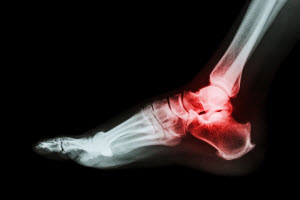The month of October makes most people think of pumpkin spice lattes, vibrant leaves, and Halloween costumes. But here at Premier Orthopaedics, we have something else we keep an eye out for, too, because it's also the time of year known as National Spine Health...
LATEST BLOGS
September is National Vascular Disease Awareness Month
As September starts, it's National Vascular Disease Awareness Month. This is a great time to learn about the health of our veins and arteries. Vascular diseases include problems like deep vein thrombosis and peripheral arterial disease. Read on to learn how to keep...
Causes & Treatment Options for Sciatica
Pain that starts in the lower back and radiates down the back of the leg is what is commonly referred to as sciatica. The pain follows the path of the sciatic nerve down the leg which means that typically, only one side of the body is affected. The sensation that...
Rehabilitation for Achilles Tendon Rupture

An Achilles tendon rupture is a very painful injury that typically occurs suddenly without any accompanying symptoms. This injury is usually treated with rehabilitation and/or physical therapy. These treatment methods reduce the pain associated with the injury, help strengthen the surrounding muscles, and help the tendon heal.
Learn more about the Achilles tendon rupture injury and how rehabilitation can help.
Anatomy
The Achilles tendon is a fibrous chord that connects the muscles in the back of the calf to the heel bone. Overstretching this tendon can cause it to rupture, causing an immediate sharp pain in the back of the ankle and lower legs. This will affect your ability to walk properly.
The Injury
An Achilles tendon rupture can occur when you make a forceful push-off with your foot, such as starting a foot race, or jumping. It can also happen if you trip and use your foot to break the fall, over-stretching the tendon. Some people hear a pop or snap when their Achilles tendon ruptures. You’ll also experience pain that can be severe and swelling near your heel. You’ll also be unable to bend your foot downward, or stand on your toes on the affected leg.
Rehabilitation
Immediately following the injury, you’ll likely be placed in a plaster cast to allow the tendon to heal. When your cast is removed, typically around 6-8 weeks, you can start with your rehabilitation.
Your doctor will set up a rehabilitation regime that includes physical therapy and various sets of exercises and stretches that will help your tendon heal. Your doctor will explain the importance of each exercise and why it is vital to your recovery.
Flexibility exercises are necessary to promote range of motion, while strengthening exercises will help you regain your strength and also reduce the risk of another injury. Endurance activities, such as riding a stationary bicycle, may also be added to your rehabilitation program.
Other physical therapy treatment methods include ultrasound heat therapy to improve blood circulation and aid in healing, as well as deep massage to increase flexibility.
Recovery varies from person to person, depending on the severity of the injury as well as how you’re completing your rehabilitation program. It’s important to be dedicated to the program in order for it to be effective and help your recovery process. Applying ice packs to the area after exercising will help with the pain and to keep the inflammation down.
Gradually, you will discover that your pain is lessening and you’re becoming more flexible. When you go a week without any pain, you can slowly start working your way back to training. Be sure to rest sufficiently between training days.
If you believe you’ve experienced an Achilles tendon rupture, see your doctor immediately. He or she will be able to diagnose the injury and design a rehabilitation program fit for your needs.
For more information about how to treating injuries through non-operative methods,click here to download our eBook, The Patient’s Guide to Non-Operative Care and Rehabilitation.


